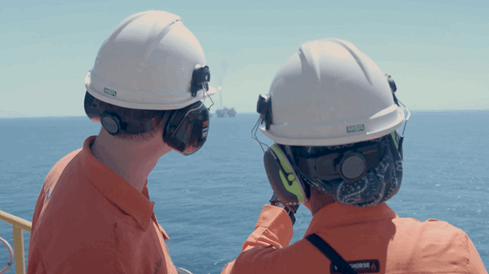
Overview
Ichthys LNG is ranked among the most significant oil and gas projects in the world. The energy development is a joint venture between INPEX group companies (the Operator), major partner TotalEnergies, and the Australian subsidiaries of CPC Corporation Taiwan, Osaka Gas, Kansai Electric Power, JERA and Toho Gas.
A Final Investment Decision for Ichthys LNG was reached in 2012 and production commenced in July 2018.
Ichthys LNG is expected to produce up to 9.3 million tonnes of LNG and 1.65 million tonnes of LPG per annum, along with more than 100,000 barrels of condensate per day at peak.
It is one of the few energy projects worldwide to incorporate the whole chain of development and production: subsea, offshore, pipeline and onshore.
Gas and condensate from the Ichthys Field will be exported to onshore facilities for processing near Darwin via an 890-kilometre pipeline. Most condensate is directly shipped to global markets from a floating production, storage and offloading facility permanently moored near the Ichthys Field in the Browse Basin.
Location
Located about 220 kilometres offshore Western Australia and 820 kilometres southwest of Darwin, the Ichthys Field covers an area of around 800 square kilometres in water averaging depths of around 250 metres. The Ichthys Field is estimated to contain more than 12 trillion cubic feet of gas and 500 million barrels of condensate.

Ichthys LNG production facilities
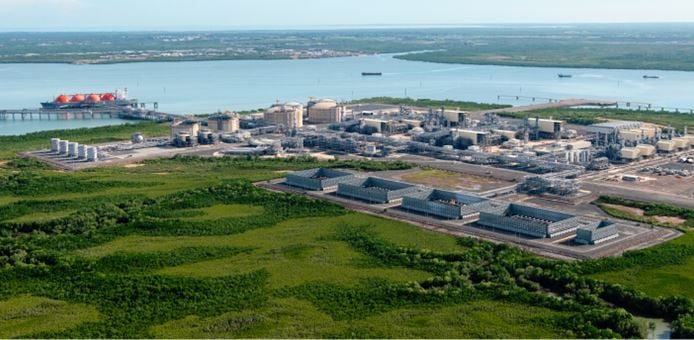
Ichthys LNG onshore processing facilities
Ichthys LNG announced Darwin as the preferred location for its onshore processing facilities in 2008.
On 18 May 2012, the Australian Prime Minister officially launched construction with a ground breaking ceremony at the now 520-hectare Bladin Point site.
Ichthys LNG onshore process facilities at Bladin Point near Darwin cool gas from the Ichthys Field and transform it into liquid for transport. The gas arrives in Darwin via an 890-kilometre gas export pipeline – the longest subsea pipeline in the southern hemisphere and the fifth longest on the planet.
Ichthys LNG’s onshore processing facilities include: two LNG processing trains, LPG and condensate plants, product storage tanks, a combined cycle power plant, administration facilities, utilities and a product load out jetty.
The LNG processing trains have capacity to produce 8.9 million tonnes of LNG per annum, at peak production.
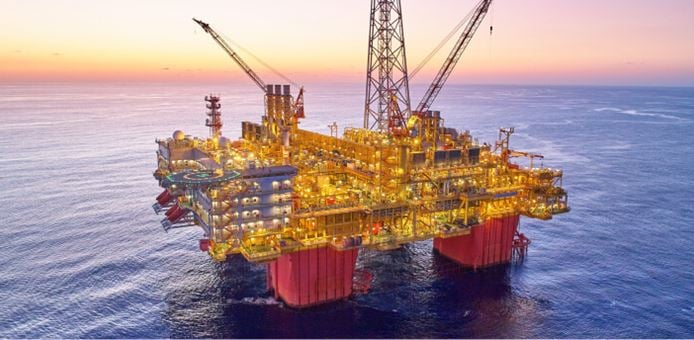
Central processing facility
With topsides weighing around 78 thousand tonnes gross and a deck size of 130 metres by 120 metres, the Ichthys Explorer CPF is the world’s largest semi-submersible production platform – and the first in Australian waters.
The CPF supports hydrocarbon processing systems and utilities, as well as living quarters for about 200 people.
It was constructed in South Korea at the Samsung Heavy Industries shipyard before being towed about 6,000 kilometres to the Ichthys Field in the Browse Basin, offshore Western Australia.
The CPF is now permanently moored near the Field for Ichthys LNG’s 40-year-life by 28 mooring lines, representing more than 25,000 tonnes of anchor chain.
Natural gas and condensate from the Ichthys Field's subsea wells undergo initial processing on the CPF to extract condensate and water and remove impurities in order to make the gas suitable for transmission to Darwin via the 890-kilometre gas export pipeline (GEP).
Most of the condensate is transferred to the nearby Ichthys Venturer floating production, storage and offloading facility (FPSO) for offshore processing, with the remainder sent to Darwin with the gas via the GEP.
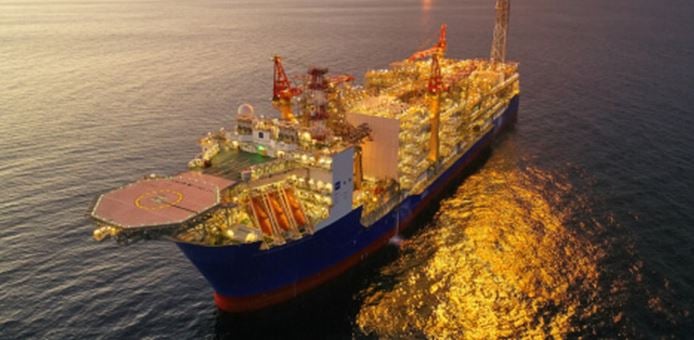
Floating production, storage and offloading facility
Ichthys Venturer floating production, storage and offloading facility (FPSO) is 336 metres long, the size of three soccer pitches laid end-to-end, and weighs approximately 150 thousand tonnes.
The turret is one of the largest and most complex ever installed on an FPSO.
At 85 metres high and weighing eight thousand seven hundred tonnes, the fixed turret allows the FPSO hull to weathervane around the turret in response to wind and sea conditions.This weather-vaning vessel was constructed in Korea by Daewoo Shipbuilding and Marine Engineering. It has been designed to hold more than one million barrels of condensate.
The facility has three thrusters that position and stabilise the vessel during offloading.
The FPSO processes and stores most of the condensate delivered from the Ichthys Explorer CPF, before periodically offloading it to carriers for export to market.
Remaining product is compressed and returned to the CPF via a subsea transfer line and sent to Bladin Point near Darwin via the 890-kilometre gas export pipeline.
The facility is home to 200 people and is designed to operate safely during the harshest marine conditions.
It is permanently moored on a non-disconnectable turret for the operational life of Ichthys LNG, about 3.5 kilometres from the Ichthys Explorer CPF.
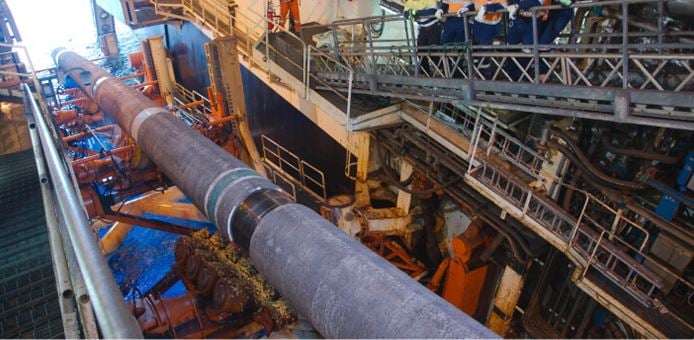
Gas export pipeline
Ichthys LNG’s 890-kilometre gas export pipeline (GEP) delivers gas and some condensate from the Ichthys Explorer central processing facility (CPF) in the Browse Basin to onshore processing facilities at Bladin Point near Darwin, in preparation for export.
The GEP is the longest subsea pipeline in the southern hemisphere and the fifth longest on the planet.
The pipeline is 42-inch in diameter and composed of about 700,000 tonnes of steel and coated with 550,000 tonnes of concrete.
International oil and gas contracting service provider Saipem was the engineering, procurement, construction and installation (EPCI) contractor for the GEP.

